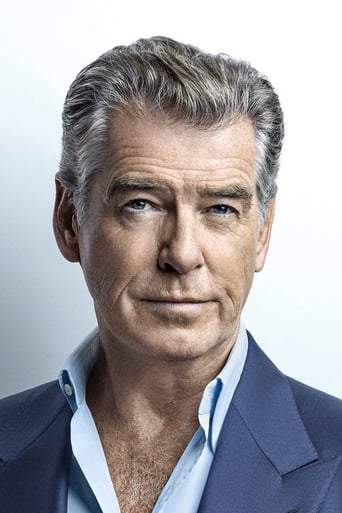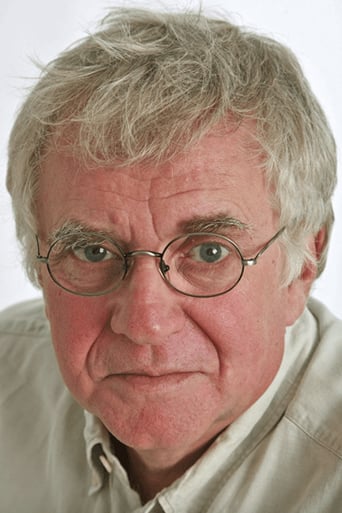Platicsco
Good story, Not enough for a whole film
Pacionsbo
Absolutely Fantastic
Loui Blair
It's a feast for the eyes. But what really makes this dramedy work is the acting.
GusF
Richard Attenborough's penultimate film as a director, this is a very good film with many interesting things to say about the necessity of conservation. It is based on the true story of the supposed Canadian First Nations trapper and hunter turned conservationist Grey Owl who was revealed after his death to be in fact an Englishman named Archibald Belaney. Rather than living off the land for his entire life, he was raised in a very nice house in Hastings by his two maiden aunts. In the 1930s, he became famous as a result of his books - though he only writes one in the film - and his lecture tours in England. The film has a strong script by William Nicholson, which admittedly takes quite a few liberties with the historical facts, while Attenborough handles the material with his usual deft hand.As the title character, Pierce Brosnan gives a great performance and there is always a sense that there is an inner conflict. In the early parts of the film, Grey Owl is depicted as being quite a cold, stoic man who rejects the efforts of the much younger Gertrude "Anahareo" Bernard, who unlike him is actually of First Nations descent, to get close to him as he fears that she will learn his secret. Annie Galipeau's performance as Anahareo is very variable, sometimes quite good and other times quite bad. As a result, her chemistry with Brosnan is inconsistent and their romantic scenes are not as effective as they could be. That said, Anahareo is written as a strong, intelligent character who becomes increasingly frustrated with the fact that she and Grey Owl can't have a truly honest relationship since it is obvious that he is hiding something from her. After he reveals his true identity, however, she tells him that it does not matter as she fell in love with him because of the way that he chooses to live his life. It is a very sweet scene but I'm not really sure that I entirely buy it, I'm afraid. The film is dominated by Brosnan and Galipeau but it also features nice appearances from Graham Greene as Anahareo's father Jim Bernard, Stephanie Cole and Renée Asherson as Grey Owl's aunts, Vlasta Vrána as Harry Champlin, Nathaniel Arcand as Grey Owl's adoptive brother Ned White Bear and Floyd Crow Westerman as the Sioux chief who may suspect the truth.Grey Owl's relationship with Anahareo proves to be of crucial significance in his life. While accompanying him on a long hunting trip in the winter of 1934, she adopts two newborn beaver kits who are left without their mother because she was caught in one of his traps. At first, he has little interest in the beavers and is generally dismissive of Anahareo's attempts to care for them. However, he is greatly upset when he mistakenly believes that one of them has been killed and decides to give up hunting, not least because beavers are on the verge of extinction in Canada. Over time, this develops into an interest in conservation in the wider sense and he gains widespread publicity when his book "Pilgrims of the Wild" is published. However, publicity is not a great thing when the public identity that you have constructed for yourself is a complete lie and Grey Owl fears that he will be exposed as a fraud, particularly when he returns to his native England for a three month lecture tour.The film depicts Grey Owl as being essentially a good man whose message of conservation was more important than his lies. While I do more or less agree with this, the film nevertheless glosses over some of the facts and idealises him a little too much for my liking. The script mentions that he had two wives prior to Anahareo but it leaves out the fact that he was a bigamist, having abandoned his first wife and young daughter. He was also known to be an alcoholic but there is not even the remotest sign of this in the film. Furthermore, he and Anahareo had a much longer term relationship in reality and they had a daughter named Shirley but none of this is reflected either. It is implied that the two of them have worked out their problems and remained together until his death in 1938 but in reality they broke up in 1936, which is about the time that the film ends.In contrast to the previous subjects of Attenborough biopics (Churchill, Gandhi, Charlie Chaplin, C.S. Lewis and Ernest Hemingway), Grey Owl is no longer a household name. I have to admit that I had never heard of him before I heard of the film. I decided to read up on him before I watched it and one of the things that I found was a fascinating article by Attenborough himself. The director was lucky enough to have the home phone number of one of the most famous and accomplished naturalists in the world, namely his younger brother David, who told him that if Grey Owl's warnings had been listened to in the 1930s "the whole ecological movement would have been advanced by at least 30 years." As young boys in January 1936, the Attenboroughs attended Grey Owl's lecture in Leicester, which is depicted in the film.Overall, this is a very enjoyable film which raises many interesting points about conservation even if it does skim over some of the more awkward facts of its protagonist's life. Had it not done so, he might have been an even more compelling character. The scenes of nature are beautiful and, at their best, resemble one of the younger Attenborough's documentaries but the film does suffer from occasional instances of slow pacing in its first half.
John Ruffle
James Bond in the wilderness? Well, that's the way it looks: Pierce Brosnan is after all best known as Bond in "Tommorrow Never Dies" (1997) and "Golden Eye" (1995) - both shot prior to this release. Frankly, the film's two leads are both badly miscast, with Brosnan turning in the marginally more convincing performance, and with Annie Galipeau (as Pony, Grey Owl's love interest) having to battle with carelessly-written dialogue.The two aunts, on the other hand are perfect. But the film is not about aunts. It is about the wilds of the Canadian wilderness. And while the photography may be pretty, there is no grit to the harsh reality of living in the wilds. Annie Galipeau, as Pony, just fails to be convincing, unfortunately, because I really wanted to believe in her. She was a relatively inexperienced twenty-year-old on this film, and it could have worked, but Richard Attenborough was maybe just not tough enough on her. He makes her look vulnerable, which of course she is.. but in the wrong sort of way.But one thing for sure, she appears picture-perfect throughout. But mascara and eyebrow thickener in the wilderness? It just doesn't fit, especially as she only ever seems to walk forest trials with Bond (sorry, Grey Owl), and use photo-ops for kissing close-ups.I've lived with forest people in the Pacific North West, and they simply don't look this pretty and stay so sweet while fighting for survival. Which brings me to another point: the film fails to evoke the period in which it is set: the 1930s. I put the blame here largely on a lack-lustre script that is keen on preaching at the expense of dramatic arc, plot points and those small details that can evoke period through action.William Nicholson wrote the screenplay, and his latest offering, "Elizabeth, the Golden Age" opened three days ago, so I do hope there is an improvement.Yes, I've read the comments others have posted, but I'm not convinced. A lot of potential, but mishandled and even maybe ill-conceived. If it had had a religious film, it would have been panned, but because it preaches environmentalism, the film remains somewhat above criticism, since it is "politically correct." Sorry, for all that, I don't buy it. Amen.
MartinHafer
Okay, I'll admit the casting in the film is REALLY strange--part of this is due to the plot, but I still had a bit of trouble believing Pierce Brosnan playing this lead (though he really did a pretty good job).It's based on a true story of an Englishman who went to live with the Canadian Indians in the early 20th century. He claimed to be a mixed blood Indian. He was, in fact, so successful and well thought of that people came from all over to hear his lectures and be taken on his wilderness treks--even though he was not a mixed blood Indian and all his knowledge was from books or faked! The movie centers on this and what occurred when the hoax was uncovered.The acting and settings were great and I really liked the film (once I suspended disbelief about Brosnan). It didn't get widespread distribution--probably because it was pretty cerebral--not a Bond film nor a romance--just a really odd film about a remarkable man.
Sheila Crowley
Radio was not a 24 hour 7days a week happening when I grew up in the 1930s England, so Children's Hour was a treat for me when we had batteries and an accumulator to spare for the power. The few programmes I heard therefore made a great impression on my young mind, and the 3 that I recall still are "Toytown", one about all the animals at the Zoo, and --- Grey Owl, talking about the animals he knew, which he called his "brothers". It was only in recently that I learnt that Grey Owl wasn't a genuine "Indian", but the tribute paid by the Sioux Chief makes great sense to me "A man becomes what he dreams". Would that we could all dream as world changing and beneficial as Archie Grey Owl Belaney. Would that a new Grey Owl could influence world leaders to clean up the environment.



